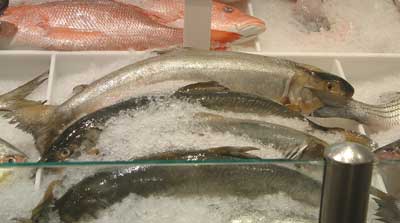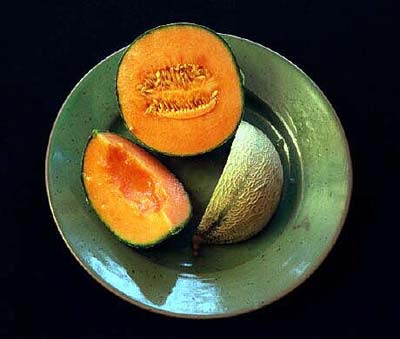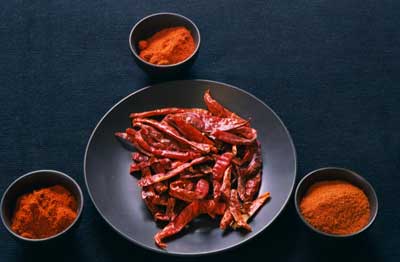
Char(r) usually refers to the Arctic char, an uncommon freshwater fish of the same family as salmon, trout and related to grayling and the vendace or powan. It is found in rivers and lakes of northern Europe, north western United States and Canada and in the Great Lakes. They are migratory fish, like salmon and trout. They have a steely blue-grey back with salmon-pink speckles on the sides and a red underbelly. They have sweet firm flesh which varies from white to pink, dependent upon its own diet, and with good flavour, some say better than trout, being something like a cross between trout and salmon. This one is the Great Lakes char(r) of southern Canada.

Cantaloupe melon, a type of melon, from Italy. Principle types are Ogen, Charentais, Tiger and Sweetheart. It is also known as rock melon.

Cassava. Manioc. Yuca. Fleshy, starchy tubers with tough brown skin and crisp white flesh, originally from Brazil but now widely cultivated. There are two types, sweet and bitter. Avoid the bitter one. Throughout the Amazon basin there are 26 varieties, each thriving under different conditions. The process of making it into flour or tapioca removes the toxins.

Cayenne pepper. Ground, hot red chillis. They are tapered and contain twice as much capsaicin as red peppers, which is why they provide so much heat to food. Chillis are often available in dried or powdered forms. Colour is not necessarily a guide to the heat, which is measured in Scoville units (named after Wilbur Scoville). Generally speaking the scale goes from small and pointed, with thin skins, having the most heat through to large and blunt having the least. The greatest heat is contained in the membranes and seeds.